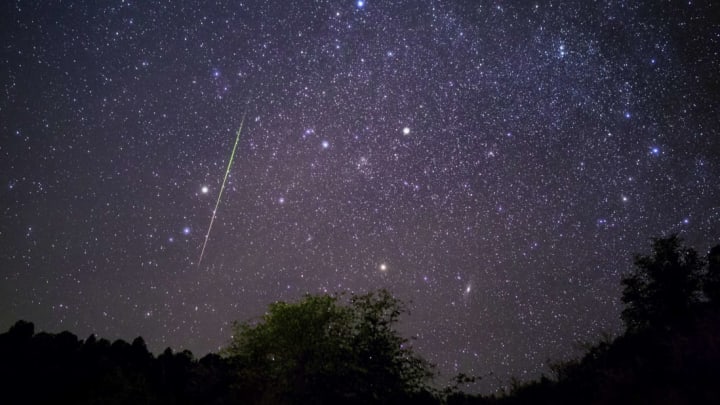We're nearing the end of 2019, but there are still a few astronomical events to catch before the year is s out. This Sunday—November 17—the Leonid meteor shower is expected to peak. Here's everything you need to know before viewing the spectacle.
What is the Leonid meteor shower?
Like all meteor showers, the Leonids are caused by meteoroids from outer space burning up on their descent toward Earth. These particular shooting stars come from the rocky tail of Comet 55P/Tempel-Tuttle. Each November, debris from the comet pummels the Earth's atmosphere, causing meteors to light up the sky at rates that can exceed 1000 per hour.
The Leonids won't reach that frequency this year. According to EarthSky, the meteors would peak at a rate of around 10 to 15 per hour in a dark, moonless sky. But because the moon will be bright this weekend, sky-gazers will likely see less of them, with only the brightest shooting stars shining through.
How to See the Leonids
For your best chance of spotting the Leonids, look up the night of Sunday, November 17 and early in the morning of Monday, November 18. The shower reaches its peak after midnight. The moon will be in its waning gibbous phase at that time, so even with clear skies, viewing conditions won't be ideal. But there are ways to increase your chances of seeing as many meteors as possible. Try finding a large object to stand under—such as a tree or building—that will block your view of the moon. If you don't see anything right away, be patient: The more time you give your eyes to adjust to the darkness, the more likely you are to spot a shooting star.
